The roster
| Electric Technic Motor 9V Lugnet Partsref 2838c01, Peeron 2838c01, Lego 74569 The older 9V Technic motor (1990). Ungeared, it has a high rotation speed and low torque, so for most applications it requires an external gear reduction. |
| Electric Technic Micromotor Lugnet Partsref 2986, Peeron 2986, Lego 70823 Appeared in 1993, this small, light weight motor turns slowly and offer low torque - but respectable torque for its size. Must be used generally with pulley, top andbase, but other motion transmissions are possible (see examples by Brian Sadowsky, with a 16t gear/clutch or a pin joiner) |
| Electric Technic Mini-Motor 9v Lugnet Partsref 71427c01, Peeron 71427c01, Lego 71427 Since 1997, this motor replaces 2838. Geared down and quite efficient, this is the motor of choice for most applications. |
| Electric Technic Mini-Motor 9v Lego 43362 In 2002, Lego replaced 71427 motor with a new type, 43362. Externally almost identical, its internal structureis very different. Performances are almost as good, and its weight is much lower. |
| Electric RC Race Buggy Motor Introduced in 2002, this motor appeared with 8475 RC Race Buggy. Very powerful, it also consumes a lot of energy. Not recommended for use with a RCX which can't deliver the current needed by this beast. The innermost shaft hole is geared up by a 23/17 factor. Only the outermost output is tested below. |
| Electric Technic Motor 9V Geared This motor was first included in 4094 Motor Moversset (2003). Provides an axle hole with friction, allowing to choose axle length without the need of an extender. Flat bottom allowing easy mounting. |
| NXT motor This motor is specific to the NXT set (2006). Includes a rotation encoder, returning to the NXT the position of the shaft with 1° resolution. Because of the special connector of this motor (non-standard phone plug type), a cable adapter is required to drive this motor with regular 9V sources. Not recommended for use with a RCX which can't deliver the high current that this motor can consume. Slow rotation speed, minimizing the need of external gear train. |
| Power Functions Medium motor This motor belongs to a new range of motors and control elements introduced in 2007, the Power Functions. It uses a new 4 pins 9V connector that provides permanent 9V supply to control elements as well as controlled power to the motors (compatibility with old 9V system is built in extension cords). The Medium motor has holes for studless constructions as well as 6x2 bottom plate. |
| Power Functions XL motor Big brother of Power Functions Medium motor, it provides a lot of mechanical power. Actuated by the same core as NXT motors, it rotates slightly faster (less internal gear reduction). Mounting is done through several pin holes. |
| 9V Train motor Stefan Vorst measured performances of the 9V Train motor. The results are below. |
| RC Train motor This motor was introduced when LEGO stopped the 9V train with metal tracks. The performances of this motor are... not so good. |
| Power Functions Train motor As the train system unifies with Power Functions, this motor , equipped with a PF cable and connector, replaces the RC train motor. Fortunately the performances are much improved, with an efficiency and power even exceeding the old 9V train motors. |
| Power Functions E-motor Introduced with LEGO Education Renewable Energy Add-On Set (9688), the strong point of this motor is that it can be easily back-driven and used as a generator. Its high speed may be also useful in some applications. But its efficiency is no better than PF-Medium, and delivered mechanical power is about half. |
Weight
|
|
|
|
|
|
48g | 10g | 42g | 28g | 55g | 40g |
|
|
|
|
|
|
|
80g | 31g | 69g | 72g | 53g | 57g | 50g |
No-load characteristics
Test conditions: motor is powered by a variable, regulated power supply. An ammeter measures current flowing through the motor, a voltmeter monitors tension across. The rotation speed is measured by a RCX equipped with a light sensor, looking at an half-white/half black cylinder.
9 V supply |
|
|
|
|
|
|
Stalled torque | 0.85 N.cm | 1.6 N.cm | 6 N.cm | 5.5 N.cm | 12 N.cm | 6 N.cm |
Stalled current | 700 mA | 80 mA | 360 mA | 340 mA | 3.2 A | 580 mA |
9 V supply |
|
|
|
|
|
|
|
Stalled torque | 50 N.cm | 11 N.cm | 40 N.cm | 2.8 N.cm | 1.7 N.cm | 3.6 N.cm * | 3.4N.cm |
Stalled current | 2 A | 850 mA | 1.8 A | 950 mA | 750 mA | 1.3 A * | 410 mA |
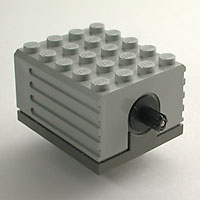
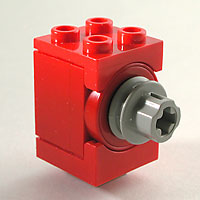
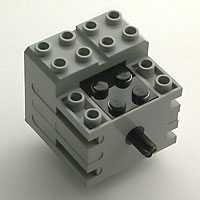
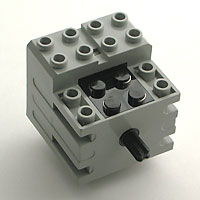
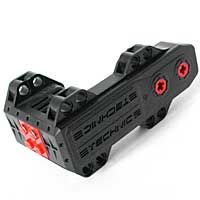
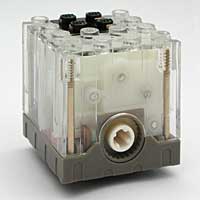
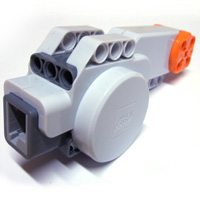
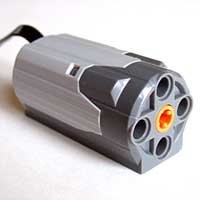
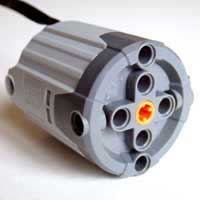
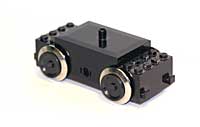
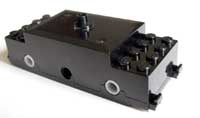
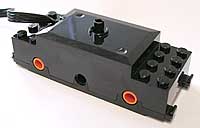
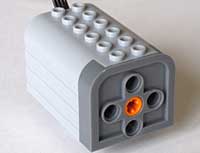













Aucun commentaire:
Enregistrer un commentaire